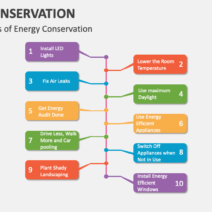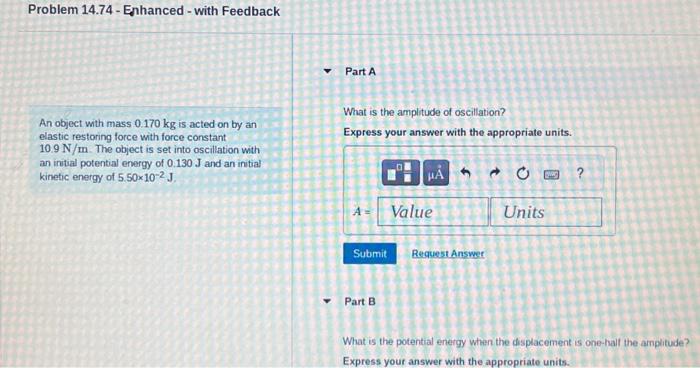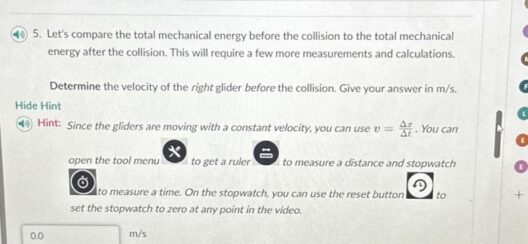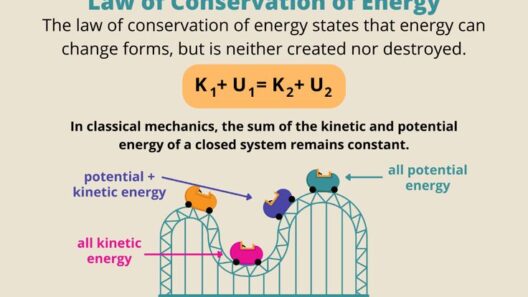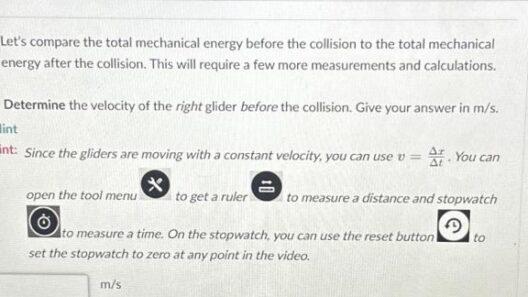Understanding the amplitude of oscillation is crucial for grasping various phenomena in physics, ranging from the behavior of a pendulum to mechanical vibrations. This analysis often centers around the principle of conservation of energy, which provides a powerful framework to delve into oscillatory motion. By utilizing this principle, we can arrive at insightful conclusions about the amplitude, the maximum extent of displacement, and the underlying dynamics of the oscillation.
To begin, we must define amplitude of oscillation. Amplitude, denoted typically as ( A ), is the maximum distance from the equilibrium position that an oscillating object reaches. Oscillation itself refers to the repetitive variation around a central value or between two or more states. The amplitude is hence a measure of the energy present in the system, directly linked to the energy transformations that take place during motion.
Next, it is essential to understand the foundational concept of conservation of energy which states that energy cannot be created or destroyed; it can only change forms. In the context of oscillatory motion, mechanical energy is often conserved, consisting of kinetic energy (the energy of motion) and potential energy (the energy stored due to an object’s position). The interplay of these two energy forms gives rise to the oscillations we observe.
Consider a simple harmonic oscillator; a prime example is a mass attached to a spring. When the spring is compressed or stretched, it stores potential energy. As the object moves toward the equilibrium position, this potential energy is converted into kinetic energy. At the equilibrium position, the potential energy is at a minimum, but kinetic energy is at a maximum. Conversely, as the object reaches its maximum displacement, kinetic energy reduces to zero, and potential energy is maximized—an essential nuance to observe for understanding amplitude through energy conservation.
To quantitatively find the amplitude of oscillation, one can employ the conservation of mechanical energy equation:
[ E_{total} = K.E + P.E ]
Where:
- Etotal is the total mechanical energy of the system.
- K.E is the kinetic energy, calculated as ( frac{1}{2}mv^2 ) where ( m ) is mass and ( v ) is velocity.
- P.E is the potential energy given by ( frac{1}{2}kx^2 ), with ( k ) being the spring constant and ( x ) the deformation from the equilibrium position.
Setting these energy forms to equal the total energy allows one to isolate and solve for the amplitude. In a conservative system without any damping forces, such as friction, the amplitude can be deduced as follows:
Assuming the initial condition when the mass is released from rest at the maximum displacement (where velocity is zero, hence kinetic energy is zero), the total mechanical energy can be expressed as:
[ E_{total} = P.E = frac{1}{2}kA^2 ]
At this point, the amplitude ( A ) becomes evident as:
[ A = sqrt{frac{2E_{total}}{k}} ]
This simple derivation conveys that the amplitude depends on the total mechanical energy and the spring constant. Notably, a larger total energy results in a larger amplitude, illustrating the direct relationship between energy and the extent of oscillation. It also emphasizes how resilience in forces can yield profound implications on amplitude variations.
In practice, finding the amplitude does not merely rely on theoretical derivations. Experimental methods also lend themselves to visualizing the concept. Utilizing graphical representations of oscillation often helps demonstrate how amplitude varies in relation to energy. Drawing velocity versus position graphs can be highly instructive—it illuminates where the maximums occur, thus rendering the amplitude visible.
However, it is important to delve deeper. An exploration of the limitations imposed by real-world variables becomes crucial. When oscillations occur in systems subject to friction or air resistance, energy is not conserved perfectly; rather, it dissipates over time. This dissipation implies a diminishment of amplitude—each oscillation loses energy, resulting in a gradual decrease known as damping. Different damping scenarios, whether light, heavy, or critical damping, yield various observable effects on oscillation, reinforcing the importance of understanding experimental context.
In advanced acoustic phenomena, oscillation principles manifest in waves—specifically in sound and light. Engineers utilize amplitude concepts in acoustics to shape sound outputs and manage environmental noise pollution, a pressing modern concern. Even the character of light itself, such as luminance and brightness, can be tied back to amplitude variations in electromagnetic waves. This shows that the implications of amplitude transcend basic physics, entwining with broader societal issues including climate change, where energy management is pivotal.
Visualizing amplitude through the prism of conservation of energy unveils a fascinating perspective. By understanding how energy translates into motion and amplitude, one not only deciphers the rhythms of nature but also contemplates the fundamental laws governing our universe. In oscillations, there lies a promise—a challenge to think deeply about energy consumption, environmental accountability, and the dynamics of our ecosystem. Taking this knowledge further, one can appreciate the intricate dance of conservation principles that underlie the sustainability narrative essential for tackling the pressing issue of climate change. The amplitude of phenomena doesn’t just measure distance; it measures our commitment to a sustainable future, echoing in every oscillation that occurs around us.
